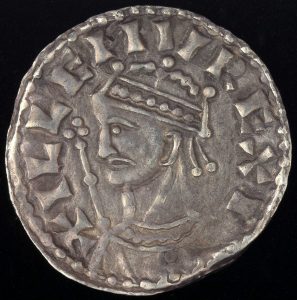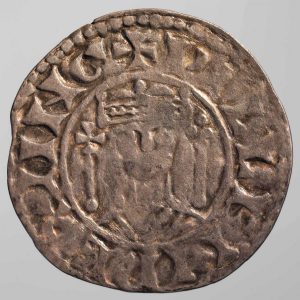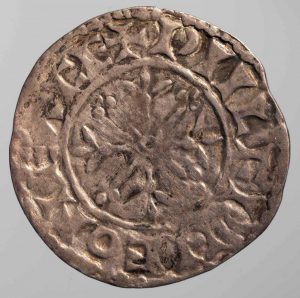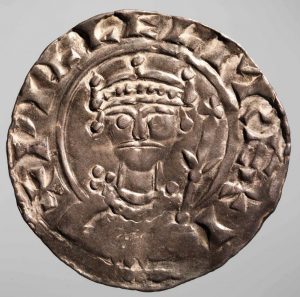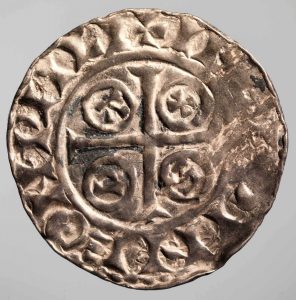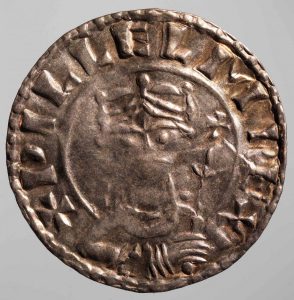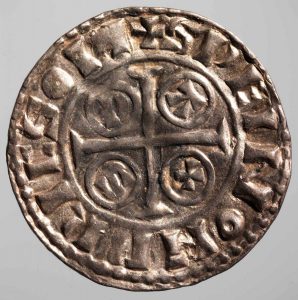Silver pennies from William the Conqueror
These silver pennies, minted in England after his victorious battle, show the face of William the Conqueror.
Silver penny, “found in England” after the inventory, dated 1066-1068, from London workshop.
Obverse : around the effigy is written the name of the King, preceded by a cross « + ILLEMV REX V ».
The lower part of the portrait separates the letter V for Villelmus from the other letters. Letter S is missing.
Reverse : around a cross flory, the legend « + PIILFILLERON » shows the clumsiness og the engraver, being probably an analphabet.
Diameter : 2 cm ; weight : 1,27 g – Musée départemental des Antiquités, Rouen, achat Rollin, 1844, n° inv. 464 b (A)
For further details : Jacqueline Delaporte, « Denier de Guillaume Le Conquérant », de l’Egypte ancienne à la Renaissance rouennaise…, Rouen, 1992, n° 62.
‘Two sceptres’ type penny, dated 1072-1074, from Exeter workshop in UK, engraver Wulfwine
Obverse : +PILLEM REX IING ; facing bust between 2 sceptres.
Reverse : +PIILFPNE ON EXCE ; cantoned cross flory with sceptres
Diameter : 2 cm ; weight : 1,28 g. – Musée départemental des Antiquités, achat Rollin, 1839, n° inv. 218.4 (A)
‘PAXS’ type pennies, dated 1083-1086, from Bristol workshop, engraver Sven for one
Obverse : +PILLELM REX ; facing bust with a sceptre on the right side.
Reverse : +SPEIN ON BRICSOI (L inverted) ; cantoned cross with 4 circled letters PAXS
probably from Wilton workshop for the second
Obverse : +PILLEL(M R in ligature)EX I ; facing bust with a sceptre on the right side.
Reverse : +IN[..]PINE ON PIILI (ou PNCI ?) ; cantoned cross with 4 circled letters PAXS
Diameters : 2 cm ; weights : 1,40 and 1,35 g. – Musée départemental des Antiquités, achat Rollin 1839, N° inv. 218.3.1 (A), 218.3.3 (A).
- Origin
Rouen – Musée des Antiquités
- Institution
Rouen – Musée départemental des Antiquités
- Original reference
Inv . 464 b (A), 218.4 (A), 218.3.3(A)
- Period
Middle Ages
- Thematic
Politic and military links
Rouen – Musée départemental des Antiquités

